
Cat Finders Guide
Finding the right cat for you and your family
Guidance steps when you are ready to actively choose your pet cat: where do you look for your cat or kitten?
Other sources for pet kittens or cats
Decisions to be made
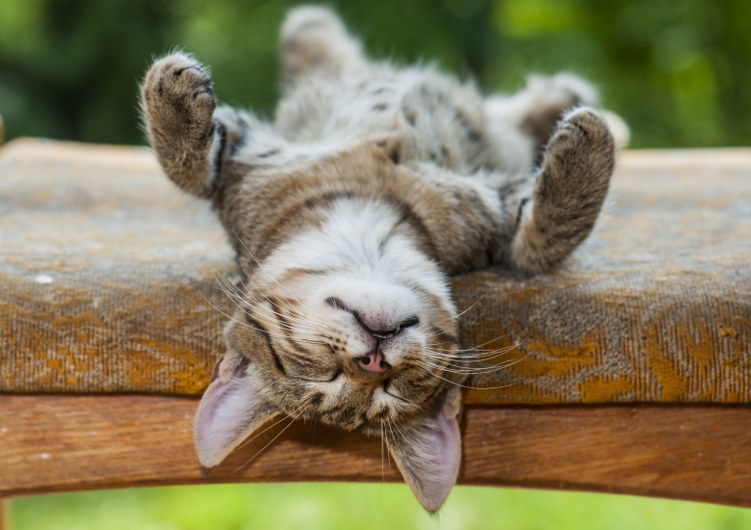
In most cases, those who dislike cats have never lived with one. They usually feel that cats are independent – do not obey; they are mysterious – you never know what they are thinking. They are aloof -- don't come to you for petting or holding! On the other hand, those who love cats appreciate their independence, like their mysterious nature and are attracted to a pet that is not overly needy: one that will ask for and give affection when they are ready. Older generations in the U.S. grew up mainly with dogs. As homes became smaller in compressed suburban or urban environments the cat gained in pet preference for many more families. Young adults, singles between 18 and 24, have had the childhood experience of living with a cat. This has become the greatest demographic segment today with the most positive attitude toward cats, according to a Morris Animal Foundation survey to assess attitudes about cats.
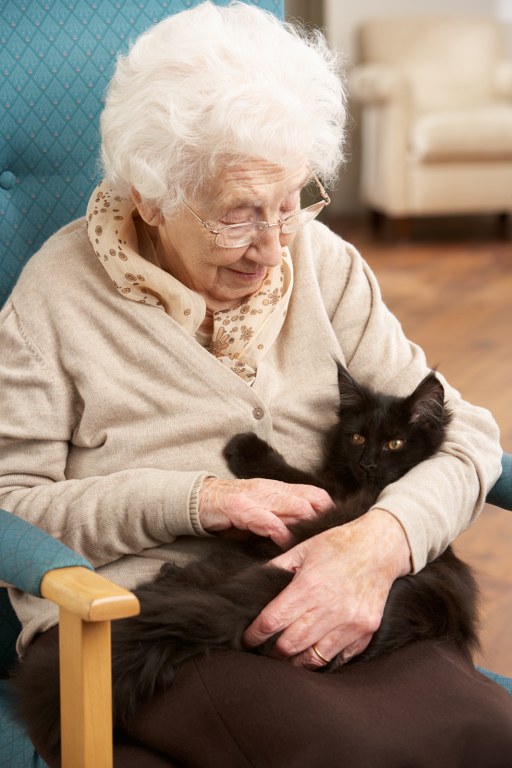
In reality, many people do not choose to own a cat – the cat chooses them. According to the 2015-2016 American Pet Product Association survey to determine how people acquired their cats, 27% of cat owners had a homeless stray catwalk up to their house, turn on the charm and eventually work their way into their lives.
There are many advantages to having a cat as a pet – they don't need to be taken for walks every day. They are fastidious about keeping themselves clean, they adapt well to indoor-only living and they are just plain fun. Cats are wonderful companions for individuals of any age or families with children. The decision to choose a cat is one of life's major decisions. A cat's expected lifespan today is 15 years or more, so this means commitment. It also means your time for daily litter box clean up, grooming, interaction and play; being able to afford the veterinary care and a cat sitter if you travel.
The first step in deciding to take a cat into your home and life is to examine your lifestyle. Is your household quiet or active? Are you home most days? Do you travel a lot? Is your routine unpredictable or regular most of the time? Are you social with lots of people coming into the home? Are there condominium rules or allergy problems to consider? What about existing pets; children or visitors with kids? Answers to all of these questions will lead to the right choice of a cat ideally suited for you.
 This guide is part of NAIA's mission to promote and preserve domestic animals. This guide is part of NAIA's mission to promote and preserve domestic animals.
|
Next, think about why you want a pet. Companionship is the most likely reason. Do you have a caring nature and the desire to give a homeless animal another chance? Are you looking for a “child substitute” or would a cat be fun for your children and help teach them respect for feline beauty and character? Do you respond to subtle communication and want the experience of living with a natural, not completely domesticated, creature?
Adopt from a shelter or rescue/fostering group: This is a good place if your primary goal is to give a homeless cat a second chance. It is especially sad to see a once loved cat in senior years who has entered the shelter system because of the death or serious illness of their owner. Luckily, cats are capable of bonding extremely well to a new owner and household, given a few months of routine and lots of attention.
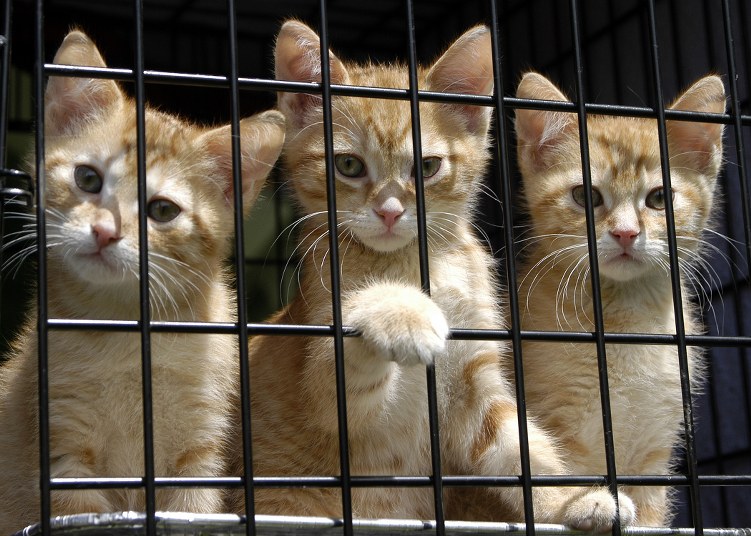 Kitten season (April to June is the height) brings huge numbers into shelters. This is always overwhelming and often results in desirable adults being overlooked due to people's preference for kittens. Because of the high risk of upper respiratory disease in kittens housed in multi-cat environments, many shelters must establish foster homes for “baby bottle” programs. Often these kittens are born to feral/community cats. Most often they are produced by those whose cat had an accidental, unplanned and unwanted litter. When owners cannot find enough friends or family members who want the offspring they often reluctantly bring them to the shelter. Many cat owners do not realize their female kittens can come into season as early as 4 months depending on the time of year. Females are also fully capable of escaping when determined to find a mate. Therefore, the results of procrastination can be tragic when it comes to undesired cat reproduction. For more information about when to neuter your cat, read Determining the Optimum Age for Gonadectomy by Margaret Kustritz.
Kitten season (April to June is the height) brings huge numbers into shelters. This is always overwhelming and often results in desirable adults being overlooked due to people's preference for kittens. Because of the high risk of upper respiratory disease in kittens housed in multi-cat environments, many shelters must establish foster homes for “baby bottle” programs. Often these kittens are born to feral/community cats. Most often they are produced by those whose cat had an accidental, unplanned and unwanted litter. When owners cannot find enough friends or family members who want the offspring they often reluctantly bring them to the shelter. Many cat owners do not realize their female kittens can come into season as early as 4 months depending on the time of year. Females are also fully capable of escaping when determined to find a mate. Therefore, the results of procrastination can be tragic when it comes to undesired cat reproduction. For more information about when to neuter your cat, read Determining the Optimum Age for Gonadectomy by Margaret Kustritz.
Unpredictable temperaments and unknown history can be a problem with the adoption of cats from a shelter or rescue group. However, there is no guarantee that bad habits will be repeated in a new caring home. Many cats who appear stressed, fearful, aggressive or depressed in the shelter environment will blossom in their new loving home. Cat temperament assessment in shelters is still in its infancy but is promising. If you are willing and want to take a cat into your home without reservations this can be quite gratifying personally as well as helpful to your community.
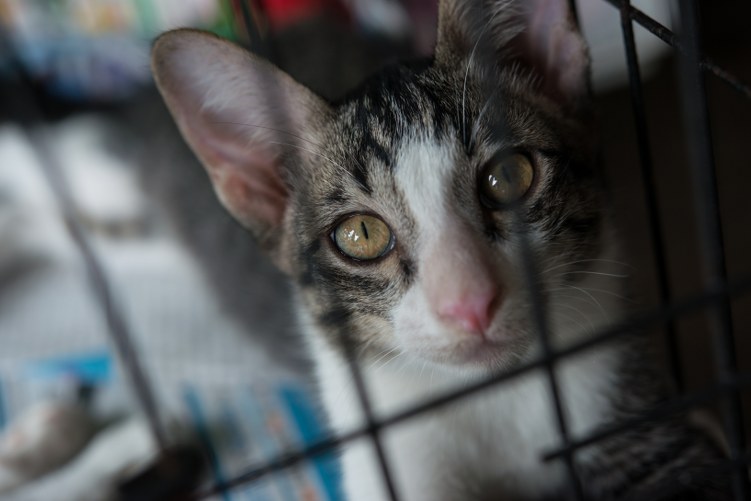 Private shelters are supported by donations; government agencies are funded by taxes. They are able to surgically sterilize kittens/cats prior to adoption and vaccinate and hold animals until adopted, depending on factors such as space, staff, volunteers, foster home programs and community support. The cost of adoption is affordable and usually much lower than the shelter’s expenses in keeping the cat until a permanent home is found. Cats in the shelters are almost entirely “random-bred”. These cats are a mixture of genes and have varied personalities. They are spontaneous and unique, however, they will share basic cat characteristics, often closer to a “natural” cat with high predatory instincts, wanting outdoor exposure. They tend to be hardy survivors needing minimal grooming assistance. Those who have been abused, or abandoned and living on the streets for a while, may display signs of behavior problems such as shyness, fear or aggression, but cats are amazingly resilient and can be rehabilitated. There can be enormous satisfaction in putting effort into building a cat's confidence and trust.
Private shelters are supported by donations; government agencies are funded by taxes. They are able to surgically sterilize kittens/cats prior to adoption and vaccinate and hold animals until adopted, depending on factors such as space, staff, volunteers, foster home programs and community support. The cost of adoption is affordable and usually much lower than the shelter’s expenses in keeping the cat until a permanent home is found. Cats in the shelters are almost entirely “random-bred”. These cats are a mixture of genes and have varied personalities. They are spontaneous and unique, however, they will share basic cat characteristics, often closer to a “natural” cat with high predatory instincts, wanting outdoor exposure. They tend to be hardy survivors needing minimal grooming assistance. Those who have been abused, or abandoned and living on the streets for a while, may display signs of behavior problems such as shyness, fear or aggression, but cats are amazingly resilient and can be rehabilitated. There can be enormous satisfaction in putting effort into building a cat's confidence and trust.
You will probably not find pedigreed breeds, or even mixed breeds, in a shelter. All cat breeds are relatively rare and makeup only about 2% to 5% of the total owned cat population. Their owners do not allow their cats to freely roam and therefore they are unlikely to be lost and picked up by animal control. Occasionally if a cat must be removed from a home due to a crisis, or in the case of a hoarding situation, there may be pedigreed cats in a shelter for a short period.
Many shelters and Internet pet locating organizations with aggressive marketing will claim “look-a-like” cats are a breed. Be skeptical when you see a greyish domestic short-haired cat advertised as a Russian Blue, or a large heavy boned tabby domestic long-haired cat being touted as a Maine Coon Cat. Not every cat with the darker “colorpoint” mask face, legs and tail is a pedigreed Siamese. This is merely a recessive color gene also prevalent in the random-bred cat population in many parts of the country.
Purchase a pedigreed cat or kitten from a breeder: If you have an ideal cat personality, or appearance, in mind, or want a cat with less chance of causing allergy reactions, then you will want to locate a dedicated breeder or find a good rescue group specializing in a specific pedigreed breed or several breeds.
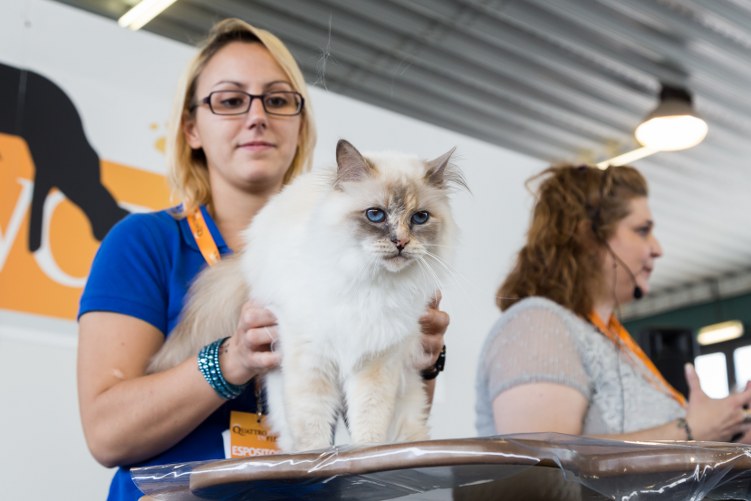 The best way to actually see potential breeds of interest to you is to attend a cat show in your part of the country. You can find a worldwide show calendar by going to the Cat Fanciers' Association home page at www.cfa.org. This website has lots of information about all the breeds as well. At a CFA cat show, you have the opportunity to see many different breeds and talk with their owners and/or breeders. Look for those individuals wearing “Ask Me” buttons. These cat fanciers, who are part of the CFA Ambassador Program, are experienced, knowledgeable and willing to answer any questions you have and introduce you to breeders. There is a CFA Ambassador Cat Program as well; these are selected retired top show cats who still like to show off to the public. Also at the show watch for “Pet-Me Cat” signs indicating that this is a cat that has been entered for competition, or for exhibition-only, and loves to interact with strangers. Several of the larger CFA shows also have a full educational program and may include breed booths with representatives and Pet-Me Cats of their breed.
The best way to actually see potential breeds of interest to you is to attend a cat show in your part of the country. You can find a worldwide show calendar by going to the Cat Fanciers' Association home page at www.cfa.org. This website has lots of information about all the breeds as well. At a CFA cat show, you have the opportunity to see many different breeds and talk with their owners and/or breeders. Look for those individuals wearing “Ask Me” buttons. These cat fanciers, who are part of the CFA Ambassador Program, are experienced, knowledgeable and willing to answer any questions you have and introduce you to breeders. There is a CFA Ambassador Cat Program as well; these are selected retired top show cats who still like to show off to the public. Also at the show watch for “Pet-Me Cat” signs indicating that this is a cat that has been entered for competition, or for exhibition-only, and loves to interact with strangers. Several of the larger CFA shows also have a full educational program and may include breed booths with representatives and Pet-Me Cats of their breed.
CFA has a Breed Council for each of the 42 accepted breeds. Contact information is on the website for each Breed Council Secretary - an elected representative who can offer assistance to find a breeder of the chosen breed. CFA also has an active rescue committee that can help direct you to a good rescue group for many of the breeds.
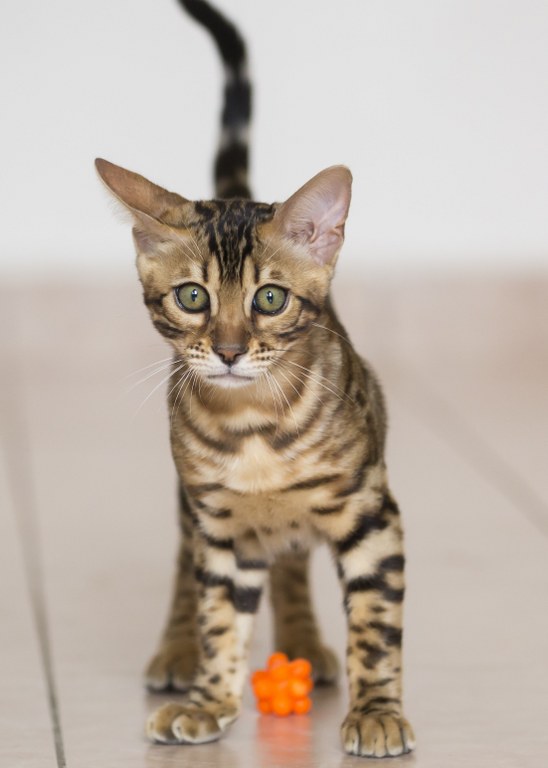 The primary advantage of choosing a pedigreed cat is that each breed has characteristic personality and appearance traits that have been fixed. These are predictable due to selective breeding for decades and sometimes centuries, yet each individual cat will be unique in many ways. Pedigreed cats usually have diminished predatory instincts because they lack their mother's instruction on how to hunt. They are happy to pounce on toys instead of rodents and they adjust well to indoor-only living or confined outdoor spaces. The breeds all have interesting backgrounds and most have a long and rich history. The pedigreed breeds deserve to be preserved as much as the small wildcat species.
The primary advantage of choosing a pedigreed cat is that each breed has characteristic personality and appearance traits that have been fixed. These are predictable due to selective breeding for decades and sometimes centuries, yet each individual cat will be unique in many ways. Pedigreed cats usually have diminished predatory instincts because they lack their mother's instruction on how to hunt. They are happy to pounce on toys instead of rodents and they adjust well to indoor-only living or confined outdoor spaces. The breeds all have interesting backgrounds and most have a long and rich history. The pedigreed breeds deserve to be preserved as much as the small wildcat species.
Many breeds of dogs are considered to be hypoallergenic, Poodles, Portuguese Water Dogs, Silky Terriers, and several others. But like dogs, no cat breed has been shown to be 100% non-allergenic. According to Dr. Jean Hofve, DVM, however, cats in several breeds secrete such small amounts of the reaction-inducing protein,
Fel d 1, in their saliva, that they can be easily tolerated by sensitive humans when combined with treatment in the environment and on the cat. Writing for Web MD, Daphine Sashin and Elizabeth A Martinez, DVM, deal with the issue by posing the question, Do hypoallergenic cats exist? They provide quotes from individuals with hyper-sensitivity to cats generally, who claim little or no sensitivity to certain cats. At the same time, they point out that much of the available information about this topic is anecdotal without scientific research and testing is expensive. However, in future years there may be more effort placed on identifying hypoallergenic pets for the estimated 5% to 10% of Americans who may not be able to own a cat due to allergic reactions.
It has become harder to find serious breeders of pedigreed cats for many reasons, including anti-breeding legislation like mandatory spay/neuter and laws that limit the numbers of cats one can own. New USDA regulations affect breeders with 5 or more breeding females on their premises. Every single pet sold must involve the buyer or a buyer’s representative, and the seller actually meeting. If a breeder with 5 or more breeding females sells a kitten to a friend across the country it means the home cattery is expected to house cats based on unsuitable commercial kennel standards, and have unannounced inspections by the USDA.
It is also very expensive to raise pedigreed cats. To properly house intact males, confine females in heat or with newborns and to give all cats the attention they require is far more difficult than it is to own altered pets. Young people have many more options for different and perhaps less complex hobbies than breeding cats, and the existing breeder population is now growing older in the U.S.
You will pay more (depending on the part of the country and the breed) - anywhere from $400 to over $1,500 - for a pedigreed pet kitten. You are buying, in addition to the kitten, a pedigree, which represents generations of selective breeding to achieve the consistency in appearance and personality that offers what you and others desire. This choice is completely personal and your ideal cat could be a striking spotted Ocicat with outgoing high energy and a mischievous personality or a more sedate and sweet Persian cat with a long flowing coat. You are paying also for ongoing mentoring should you want to show your kitten as a neutered/spayed cat in Premiership classes. And a conscientious breeder will also be available for help when you need advice about health, feeding, grooming or behavior.
Pedigreed cats need to be proven as good examples of their breed in the show ring where they are assessed by highly trained judges. In order to be accepted by the owner of a top stud cat, a female must be assumed to be of high quality. A CFA Champion title means the cat has been found by 6 judges to not have a disqualifying fault according to the breed standard and is in good condition. CFA Grand Champions, Regional Winners or National Winners are exceptional cats, and achieving these levels of recognition is costly (Entry fees, hotels and traveling to cat shows are expensive). You are also paying for top veterinary care, testing, vaccination and in most cases sterilization prior to the transfer of a kitten to you.
Kittens that have been given the chance to go through a full “kittenhood” means keeping them longer. Many will have been to one or more cat shows before the decision is made on whether the kitten will be placed as a show cat, a breeder or a pet either for showing in Premiership or, if there is a fault, strictly as a pet and not for breeding or showing (a fault could be, for example, a tiny invisible to the eye tail kink).
You may have a long wait for a kitten in many breeds because the demand is higher than what breeders can fulfill. Often persistent contact is helpful. If you cannot wait for a kitten, going to a breed rescue could be a good alternative. The cats will be most likely young adults or older senior cats whose owners can no longer give them the attention or care they need but who want to assure that their loved cat remains in a home environment until carefully placed with a new owner.
The Internet has become a major source of information on most topics related to cats. Many breeders have excellent websites. This is a good means for initial contact, but it also requires due diligence and caution; and buying only after extensive online communication, including photos. Visit the breeder's home or have a reference from a trusted friend who has been on the premises. It is safest to not rely solely on photos sent and the look of the website.
Newspaper ads: Kittens sold in the newspaper are often sold by either novice breeders or “casual” breeders. They also may be unintended “oops” litters produced by pet owners who planned to spay their female but were too late. These kittens can be social and healthy, however, there is the risk of cost-cutting on veterinary care or the sellers may not be aware of vaccinations needed. Probably there will not be a seller agreement and no offer of ongoing help and guidance responsibility. Go to the home if possible to pick up the kitten and be cautious.
Pet Store: In most towns, there will be few if any pedigreed cats sold in pet stores. Commercial breeders of dogs may have a few breeding quality cats but they find litters of kittens too difficult to raise, keep healthy and make a profit. Kittens will be expensive and are transported at 8 weeks, which is stressful. However, pet stores will often have random-bred kittens or cats available for adoption, either through rescue group partners or kittens/cats will be left at their doorstep. They usually offer health guarantees. Another advantage is that you can see, touch and feel what you are buying.
Friends and family: For many years, this category has been the source of cats for about 28% of people who acquire them according to the 2015-2016 American Pet Products Association (APPA) biannual survey. Some studies suggest that when a person accepts a cat or kitten from a friend or family member, there is a lower risk of relinquishment to a shelter than from many other sources. Information in several recent surveys of owners with cats in their homes has shown that when a person accepts a cat/kitten as a gift, there is no increased risk of relinquishment to a shelter.1 However, at least one study indicates that 33.2% of those cats who are relinquished to shelters were acquired from friends. This study also revealed that many cats relinquished to shelters are intact 50.8% and that 46.9% of relinquished cats had not been to a veterinarian.2 It is apparent that education is needed before and after the acquisition of a cat, including when friends or family are the sources.
Kitten or adult: Kittens are delightful and should be experienced at least once in a lifetime. It is easy to introduce a kitten into a household and to children or other pets. They have not established bad habits and can easily learn the meaning of “NO”. They are happy to be indoors only.
Kittens can have a few drawbacks. Most shelters have un-weaned kittens either born to strays or relinquished and fostered. They try to place them as soon as possible; usually at 8 weeks at the time of their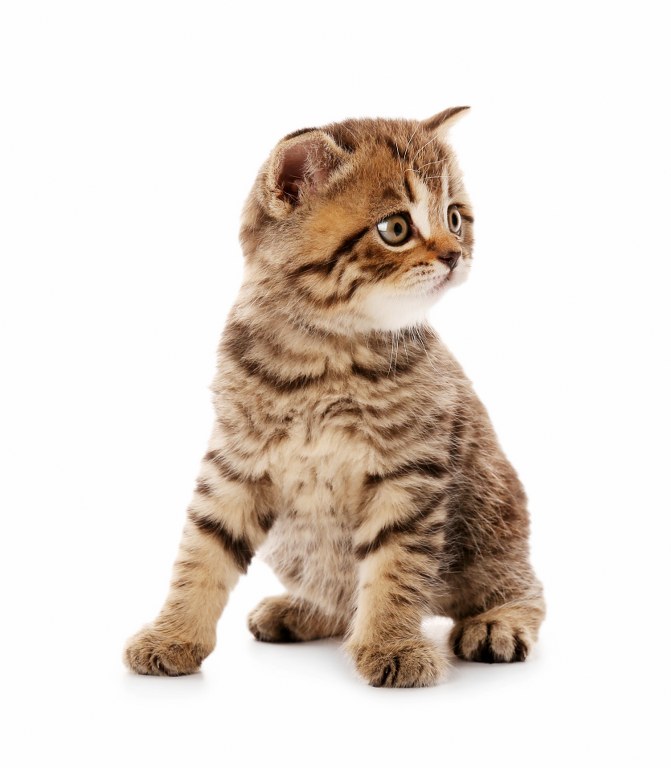 first vaccinations and following early-age sterilization. Transferring at this age is quite stressful when the kitten's immune system is not fully developed and their behavioral stage is often at the fear point. If a kitten has been born to a feral mother it is important to have careful socialization prior to 8 weeks as well as to place the kitten in a new home as soon as it is practical, and preferably with a litter-mate or another kitten close to the same age.
first vaccinations and following early-age sterilization. Transferring at this age is quite stressful when the kitten's immune system is not fully developed and their behavioral stage is often at the fear point. If a kitten has been born to a feral mother it is important to have careful socialization prior to 8 weeks as well as to place the kitten in a new home as soon as it is practical, and preferably with a litter-mate or another kitten close to the same age.
Most breeders of pedigreed cats prefer to place kittens no younger than 12 to 14 or 16 weeks. This gives the opportunity for litter-mate wrestling interaction and extra time with their mother, who teaches them when biting hurts and what is dangerous or not to be feared, The period from 8 weeks to 16 weeks is very important for kittens as they also receive booster vaccines and build immunity. This is the time when kittens voluntarily give up nursing, learn new experiences, meet strangers and build confidence. At 4 months of age, a kitten is still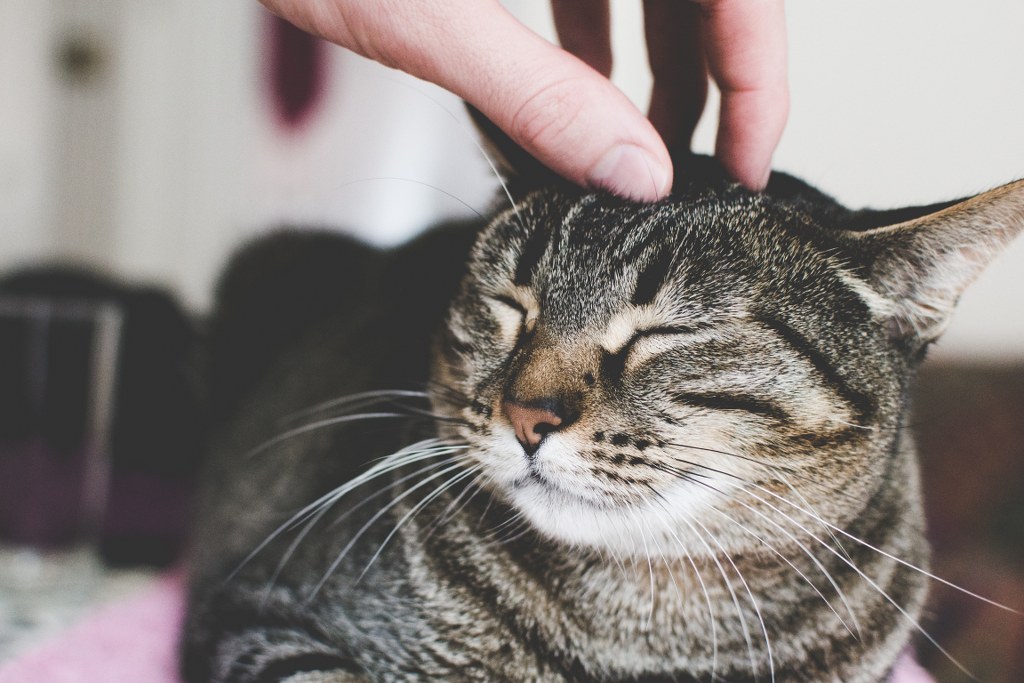 extremely playful but is also ready and eager to take on anything, including other cats, dogs or children.
extremely playful but is also ready and eager to take on anything, including other cats, dogs or children.
An adult cat's personality and appearance are established. There are few surprises. If between 2 and 8 years old, an adult will be curious and still quite playful but usually calm and already have well-ingrained good habits such as litter box use and scratching on a post. Depending on their background, an adult will be accustomed to grooming and claw clipping. Senior cats, 11 years or older, are especially mellow, more dependent and affectionate with their owners.
Longhair or shorthair: Longhair cats: Even though a random-bred cat may be genetically a longhaired cat the coat is normally medium length on the body with a guard hair texture that is not prone to matting. Combing several times a week and an occasional bath is all that is needed.
Longhaired pedigreed breeds: Several breeds have been selectively bred to emphasize coat length and texture. Cats, like the Persian, need to be combed every day with a wide-tooth large stainless steel 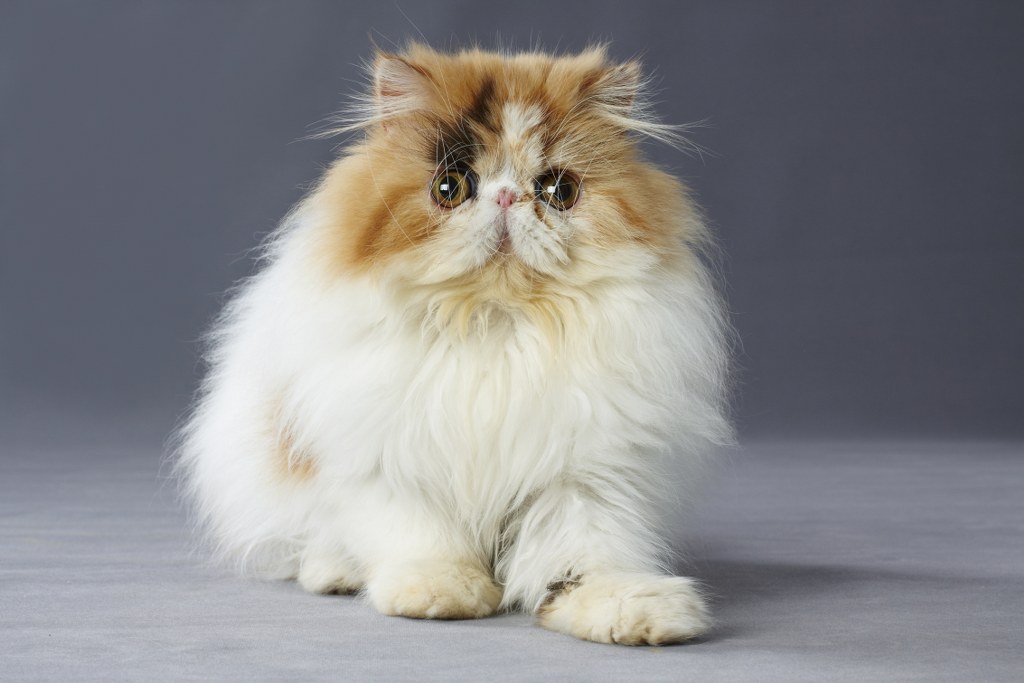 comb in order to avoid matting in their extremely long flowing fine-textured coat. They also will usually need a bath about once a month to clean the coat of oils and dirt. A breeder should have started your kitten as early as 4 to 6 weeks of age on the grooming routine. If you continue this, the cat will love to be fussed over. Those who select a high maintenance breed must be individuals who like to fuss. Combing a longhaired cat should be a relaxing pleasure for you and a bonding time that your cat will also enjoy. Bathing and blow-drying a longhair is time-consuming but necessary. The glory of a full coated gorgeous Maine Coon, Norwegian Forest Cat, Siberian, Ragdoll or Persian is part of the joy of owning such a magnificent cat. If at times the grooming becomes is too much, or your cat starts to drop coat in hot weather, then a professional “lion cut” will be a good solution to make the cat comfortable. In the fall the coat will once again start to grow back and will soon be long and flowing by winter.
comb in order to avoid matting in their extremely long flowing fine-textured coat. They also will usually need a bath about once a month to clean the coat of oils and dirt. A breeder should have started your kitten as early as 4 to 6 weeks of age on the grooming routine. If you continue this, the cat will love to be fussed over. Those who select a high maintenance breed must be individuals who like to fuss. Combing a longhaired cat should be a relaxing pleasure for you and a bonding time that your cat will also enjoy. Bathing and blow-drying a longhair is time-consuming but necessary. The glory of a full coated gorgeous Maine Coon, Norwegian Forest Cat, Siberian, Ragdoll or Persian is part of the joy of owning such a magnificent cat. If at times the grooming becomes is too much, or your cat starts to drop coat in hot weather, then a professional “lion cut” will be a good solution to make the cat comfortable. In the fall the coat will once again start to grow back and will soon be long and flowing by winter.
Shorthair cats: This is a better choice for those who do not have the time or personality suited to “fussing” on a daily basis. Shorthaired cats do a great job of cleaning and grooming themselves. Unless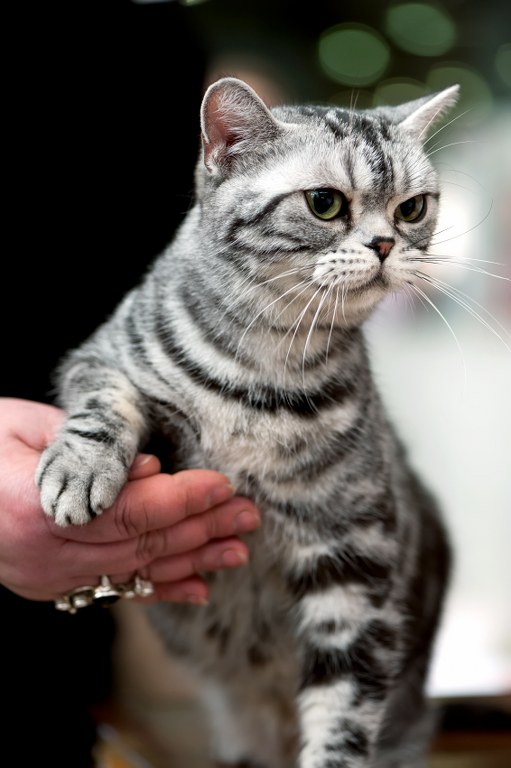 they go outside or become dirty shorthaired pet cats may not ever need a full bath. However, shorthaired cats tend to shed hairs all year round. To avoid hair on your clothes and furniture a quick wet hand grooming, drawing the dead hairs out as you massage your cat, or a dry “mousse” shampoo massage every day is easy and liked by cats. This also helps avoid hairballs that cats will often throw up after doing their own grooming.
they go outside or become dirty shorthaired pet cats may not ever need a full bath. However, shorthaired cats tend to shed hairs all year round. To avoid hair on your clothes and furniture a quick wet hand grooming, drawing the dead hairs out as you massage your cat, or a dry “mousse” shampoo massage every day is easy and liked by cats. This also helps avoid hairballs that cats will often throw up after doing their own grooming.
Shorthaired pedigreed breeds: The Exotic breed is genetically very close to the Persian and is referred to as the “lazy man's Persian” or the “working woman's Persian.” This is the perfect breed for those who love the gentle sweet temperament with a cobby body and round head but without the level of grooming required for a Persian. The slinky breeds, Siamese and Orientals, benefit from a rubber brush followed by a piece of silk or a chamois to smooth the coat and add sheen. Other shorthaired breeds with resilient or plush coats are wet hand groomed or combed depending on the coat but always in a way to enhance the natural texture. Show cats will always have a bath to be spotlessly clean.
Male or female: When spayed or neutered either will be equally good pets. As cats mature, neutered males tend to be quite mellow and will become lap sitters when they have not apparently had time for this before. Females are sometimes more likely to be bossy and act like princesses but as they age they continue to be playful and full of fun. Older males are often accepting of another cat, especially a spay and they will “mother” a kitten.
Temperament match is important: If you have two cats there is a difference in how females and males play. Young males/neuters will be more rambunctious, which can overpower and frighten females/spays. Pouncing and wrestling with kicking is not a female cat's idea of fun. Neutered male cat buddies of similar age and activity level can be ideal. In general, a laid back cat may not appreciate a high energy cat. A dominant personality may work best with a confident but easy going friendly cat that is not interested in a hierarchy battle, rather than a shy, fearful cat.
Once you have chosen the new addition to your home and life there will be much to prepare for the anticipated arrival and items to buy. You will have to cat-proof your home. You will want to select a veterinarian, spay or neuter if not already done. If you have a new kitten and children or a dog there will be special supervision needed. Attention to the adjustment to the household and proper care of your kitten, including feeding is critical in the first year. This information will be covered in a separate article.
1. Weiss, E.; Dolan, E.D.; Garrison, L.; Hong, J.; Slater, M. Should Dogs and Cats be Given as Gifts? 2013, http://www.mdpi.com/2076-2615/3/4/995/htm
2. Salman, M.D.; New Jr., J.G.; Scarlett, J.M.; Kass, P.H.; Ruch-Gallie, R.; & Hetts, S, National Council on Pet Population Study and Policy (NCPPSP) Human and Animal Factors Related to the Relinquishment of Dogs and Cats in 12 Selected Animal Shelters in the United States. ©1998 Journal of Applied Animal Welfare Science, 1(3), 207-226. July 1998

This article was contributed by
Joan Miller of Cat Fanciers' Association (CFA)
Chair, CFA Outreach and Education Program
All Breed Judge Emeritus and Judges Association Highlight Award 2013
CFA Award of Merit 2009
 Discover Animals is a web-based educational resource offered by the NAIA
Discover Animals is a web-based educational resource offered by the NAIA